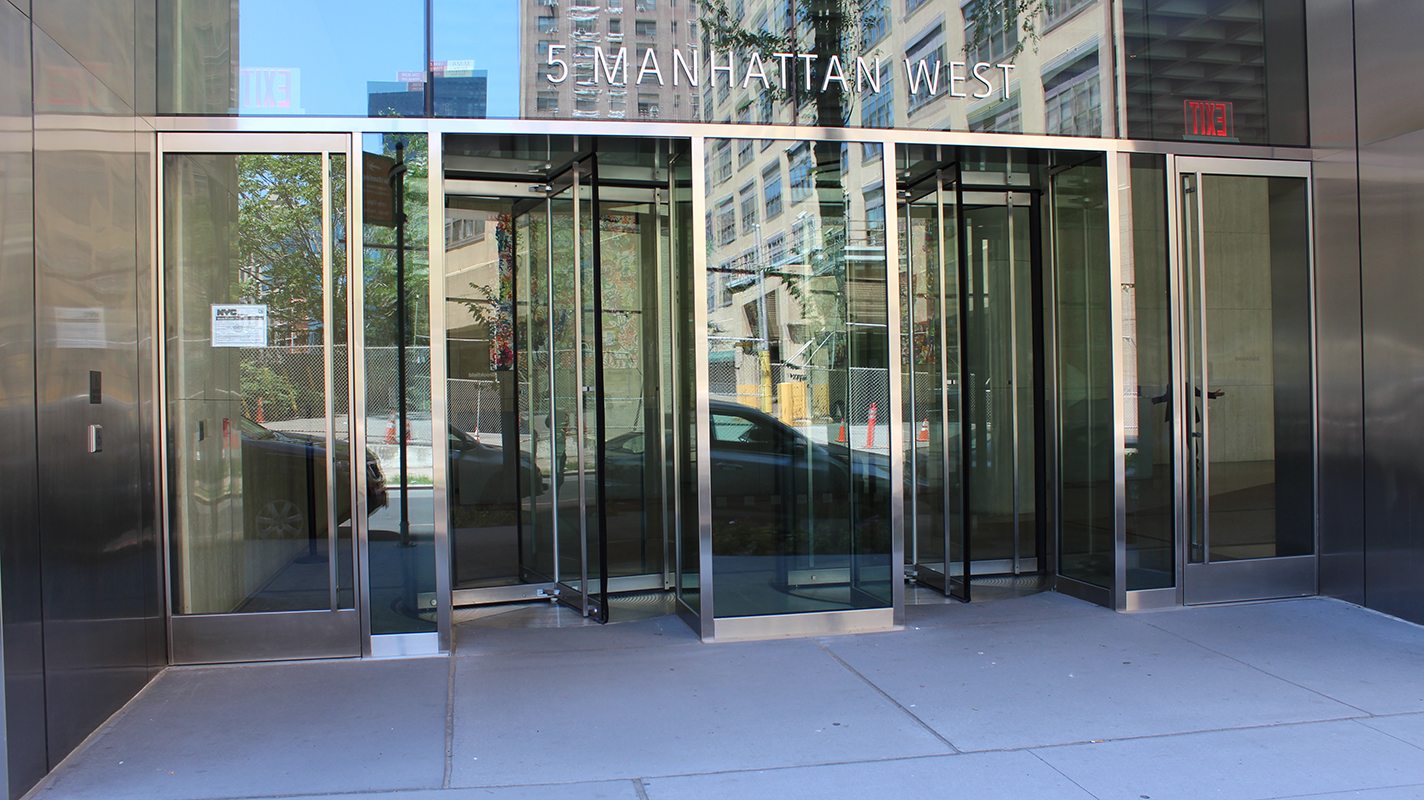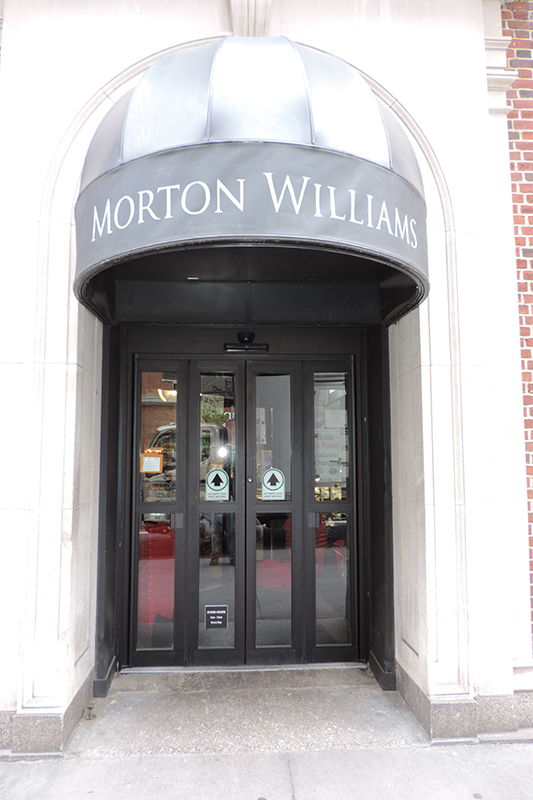Automatic swing doors have become a staple in modern architectural design, offering seamless access solutions across a wide range of commercial, institutional, and public spaces. The main reason for automatic swing doors is ADA. Still, with the increased demand for non-contact entryways—especially following the COVID-19 pandemic—automatic swing doors stand out as both a hygienic and practical solution for enhancing convenience and accessibility. But what exactly are automatic swing doors, how do they work, where are they best installed, and how do they compare to other door types like sliding or folding doors?
How Automatic Swing Doors Work
Automatic swing doors are hinged doors that open and close automatically through a mechanized system. They are typically powered by either an electromechanical or electrohydraulic operator, which controls the door’s movement based on input from sensors or activation switches.
Components of an Automatic Swing Door System
- Door Operator: The motorized mechanism mounted above the door, concealed within the frame, or in the ground. It handles the opening and closing of the door.
- Activation Sensors: These detect motion, proximity, or touch to initiate door movement. Common sensor types include infrared, microwave, or push-plate switches.
- Safety Sensors: Positioned around the door frame, these sensors prevent the door from closing on a person or object.
- Control Systems: Programmable logic units or microcontrollers manage door speed, dwell time, and operational modes such as manual, automatic, or locked.
- Power Supply: Either hardwired into the building’s electrical system or backed by a battery for redundancy.
Modern systems are also compatible with access control technologies, including keypads, badge readers, and biometric scanners, making them suitable for secure commercial environments.
Best Places to Use Swing Doors
Automatic swing doors are incredibly versatile and are commonly installed in a variety of settings where ease of entry and exit is essential.
Commercial Buildings
- Office Complexes: Provide hands-free entry for employees and guests.
- Retail Stores: Encourage a welcoming, accessible atmosphere while reducing door contact.
- Restaurants and Cafés: Ensure smooth entry, especially for guests with mobility aids or hands full with items.
Healthcare Facilities
- Hospitals and Clinics: Allow non-contact entry for patients, staff, and visitors—critical for infection control.
- Nursing Homes: Enhance mobility for elderly residents and caregivers.
Educational Institutions
- Schools and Universities: Offer safe, accessible entry for students, staff, and visitors.
Transportation Hubs
- Airports and Train Stations: Streamline foot traffic and improve crowd management.
Government and Municipal Buildings
- Courthouses, City Halls, and DMV Offices: Ensure ADA compliance and accommodate high footfall.
Pros and Cons of Swing Doors
While automatic swing doors offer numerous advantages, they are not without some limitations. Let’s weigh the pros and cons to understand how they compare to sliding or folding doors.
Advantages of Automatic Swing Doors
- Space-Efficient at the Hinge Side: Unlike sliding doors that require adjacent wall space, swing doors use minimal space behind the opening arc.
- Versatile in Design: Available as single or double doors, they can be customized with various materials, including glass, aluminum, or steel.
- Improved Accessibility: Their automatic nature allows users of all abilities to pass through without physical effort.
- Cost-Effective Installation: Swing door operators can often be retrofitted onto existing manual doors, reducing the cost of upgrades.
- Energy Efficient Options: Many models now comply with energy standards, using sensors to reduce unnecessary operation.
- Easy to Integrate with Access Control: Ideal for secure areas where credentialed entry is required.
Disadvantages Compared to Sliding or Folding Doors
- Swing Arc Requirement: They require a clear area in front and behind the door, which may not be suitable for tight corridors.
- Less Aesthetic Continuity: Sliding doors offer a sleek, uninterrupted glass wall look preferred in modern design-heavy spaces.
- Higher Maintenance in High-Traffic Areas: More moving parts and impact stress can increase wear and tear over time.
Accessibility Benefits
Automatic swing doors are essential for ADA (Americans with Disabilities Act) compliance and improving access for individuals with mobility challenges. Their touch-free operation ensures inclusivity in spaces frequented by:
- Wheelchair users
- Elderly individuals
- Parents with strollers
- Delivery personnel with carts
Door Automation Corporation specializes in accessibility-centric designs and works with top architectural firms to ensure all installations meet or exceed regulatory and ergonomic standards.
Installation Requirements
Installing automatic swing doors requires careful consideration of several factors:
- Space Availability: There must be enough room for the door’s swing path, both inward and outward (depending on configuration).
- Structural Integrity: The door frame and surrounding wall must support the operator’s weight and motion.
- Power Supply: Electrical wiring must be compatible with the operator system.
- Safety Compliance: Installations must align with ANSI A156.10 or A156.19 standards for pedestrian doors.
- Traffic Flow Analysis: Swing direction should be aligned with common traffic flow to prevent congestion or obstruction.
At Door Automation Corporation, we perform comprehensive site evaluations to ensure every project is customized for optimal performance and safety.
Maintenance Considerations
To maintain reliability and safety, automatic swing doors must undergo regular inspections and servicing:
- Sensor Calibration: Safety and activation sensors should be tested and calibrated to avoid misfiring or failures.
- Lubrication and Cleaning: Mechanical joints and operators should be lubricated, and door surfaces cleaned regularly.
- Software Updates: For systems integrated with smart access control, firmware should be kept current.
- Wear and Tear Checks: Hinges, pivots, and closers must be checked for signs of mechanical fatigue.
Door Automation Corp offers ongoing maintenance plans that ensure your automatic doors stay compliant, functional, and aesthetically pleasing throughout their lifecycle.
Why Choose Swing Over Sliding or Folding Doors?
While sliding and folding doors are ideal in certain environments, automatic swing doors offer distinct advantages:
- Retrofitting Capability: Existing manual doors can often be converted to automatic swing systems without replacing the entire frame.
- Cost Efficiency: Generally less expensive to install than commercial-grade sliding or bi-fold systems.
- Flexible Access Control: Easier to integrate with locking mechanisms or badge-based access than continuous motion sliding panels.
- Reliability: Fewer issues with track alignment or motor synchronization common in sliding doors.
However, sliding doors do excel in high-traffic areas with limited swing space, and folding doors are useful in narrow entryways. The right choice depends on a professional evaluation of your specific site conditions and needs.
Partner With Door Automation Corporation
Automatic swing doors continue to prove essential in commercial spaces that value convenience, safety, and accessibility. Whether upgrading an existing entry or planning a new construction project, these doors offer flexible solutions with a strong return on investment.
At Door Automation Corporation, we specialize in providing industry-leading access solutions for commercial environments. Our services include the installation and maintenance of:
- Automatic swing, sliding, and revolving doors
- Manual entryways with automation-ready modifications
- Touch-free systems compliant with post-COVID safety protocols
We don’t just install doors—we help design smarter, more accessible buildings. Our team collaborates with many of New York City’s top architectural firms, acting as trusted consultants for high-profile projects. We ensure all our solutions meet modern standards for energy efficiency, safety, and ADA compliance.
If you’re looking to improve your facility’s entryways with reliable, modern, and accessible solutions, contact us today.
Let’s open the door to smarter access—together.







